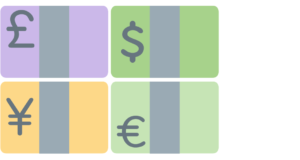Early in the second quarter of 2025, equity market volatility increased sharply. There were escalating trade tensions because the Trump administration announced new “reciprocal” tariffs on a range of their trading partners. This then prompted retaliatory threats from those trading partners, especially between the U.S. and China.
Through May and June, sentiments improve, resulting in a strong recovery in risk asset performance. Sentiment improved after the announcement of the 90-day pause in US tariffs, and trade tensions then gradually cooled. By June, concerns around tensions in the Middle East caused minor market volatility, but the risks of a broader regional conflict were largely shrugged off after a ceasefire between Israel and Iran. The MSCI World Index (hedged into AUD) returned 9.6% for the quarter.

USA
The quarter began with significant equity volatility. The S&P500 fell 0.7% in April, and, at one point was down over 10% within the month. Momentum turned around as trade tensions calmed. Solid corporate earnings growth buoyed investor sentiment. The Federal Reserve kept interest rates on hold, disregarding pressure from President Trump to cut rates. Concerns from the Fed around the uncertain impact of tariffs on inflation were the primary motivation for keeping rates on hold.

Europe
European equities lagged broader Developed Markets over the quarter (the MSCI Europe Index (in EUR) returning 1.1%). European equity returns were in line with the US equity market calendar year-to-date.
ECB officials delivered an eighth straight interest rate cut at their June meeting. They referred to highly uncertain global conditions and persistent trade tensions as ongoing concerns for the Eurozone economic outlook.

Asia
Local currency returns in Asia were generally positive across the main indices. Hong Kong was a clear outperformer (16.8%).
Trade negotiations between China and the USA appeared to improve over the quarter, which supported market sentiment. Korean equities were particularly strong in June, following the inauguration of President Lee Jae Myung. The President’s inauguration hinted that a long period of political instability in Korea may be ending.

Australia
Australian equities performed broadly in line with Developed markets (9.5% for the quarter). The IT sector outperformed (returned 26.9%). The Materials sector was the weakest performer (-0.4%).
Following the cut to rates at its May meeting, the RBA surprised the market by voting to keep rates on hold shortly after quarter end. The RBA referred to an uncertain global outlook and relatively strong domestic employment conditions as reasons to maintain the cash rate at 3.85%.

Currency and bonds
Fixed interest markets delivered positive returns over the quarter. Australian bonds were up 2.6% and global bonds were up 1.5%. There was some variance in the movement of 10-year yields between Australia and the USA over the quarter. Australian 10-year yields fell 22bps to 4.16%, while US 10-year yields rose marginally, to 4.23% (+2bps).
There was continued general US Dollar weakness across the quarter. The USD was weighed down by concerns over economic sustainability, political uncertainty, and the impact of trade policy. The AUD appreciated over the quarter (+5.2%), supported by improving risk sentiment, weaker sentiment for the USD, and comparatively steady domestic conditions.


